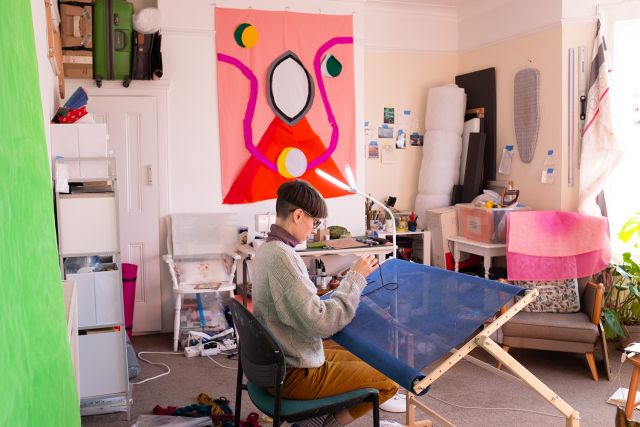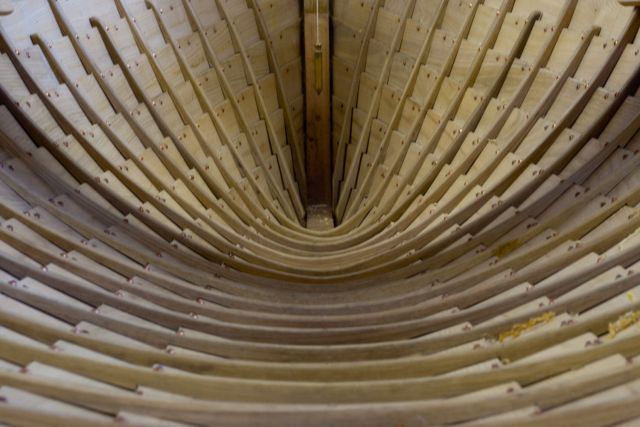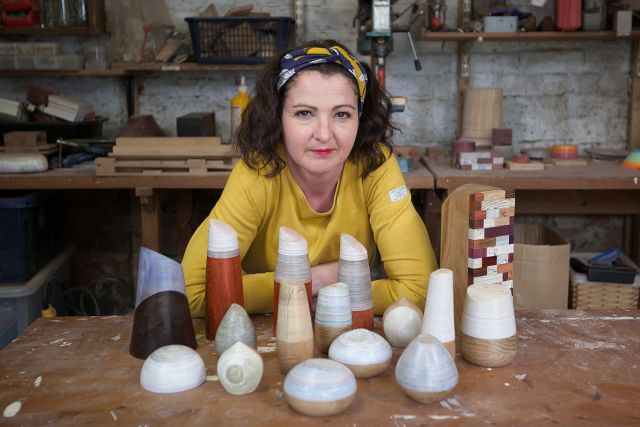This parian porcelain vessel sculpture is created from layers of thrown air tight clay spheres that are compressed and stacked one on top of the other to reveal surface tension. Colour lines are added to the surface using slip, profile and brush before the compression. The stack is then cut through using a cylinder cutting tool. The cut forces further distortion to the stacked form and creates an opposing precise interior surface in reference to a vessel.
Height 23 cm
Diameter 18 cm
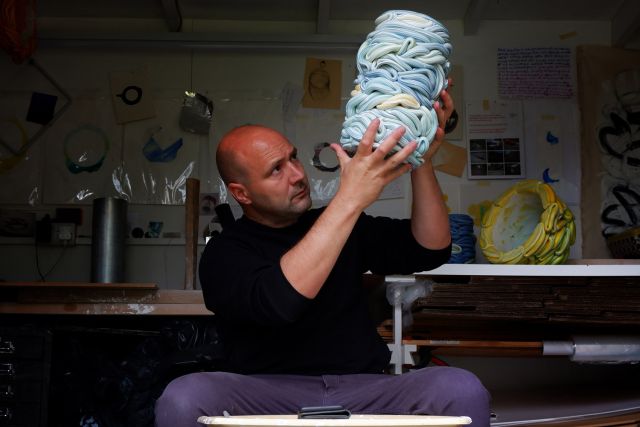
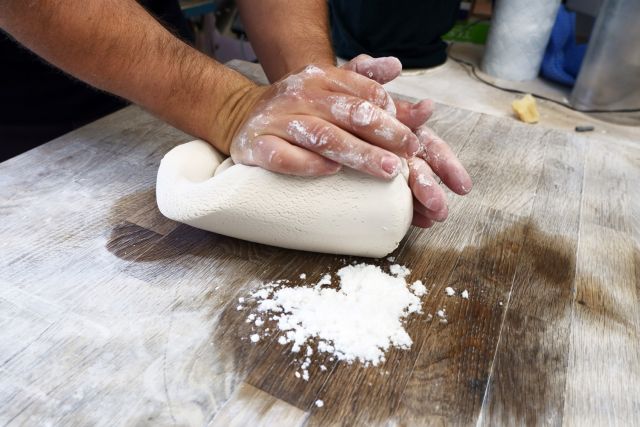
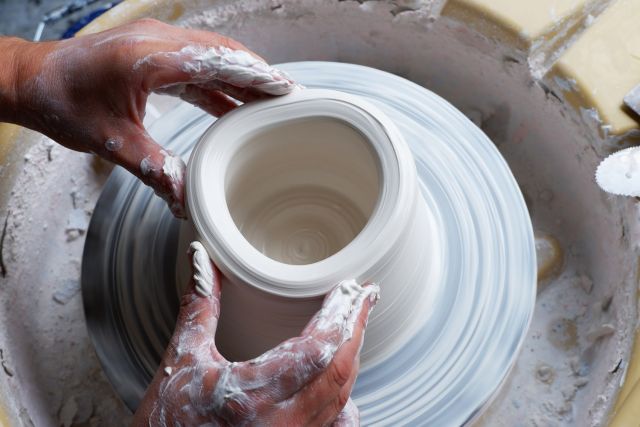
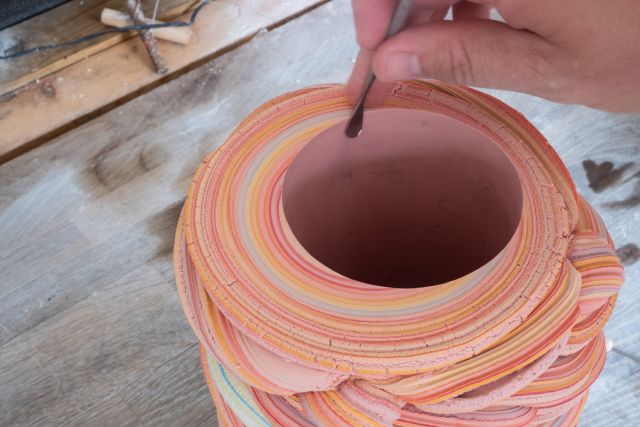
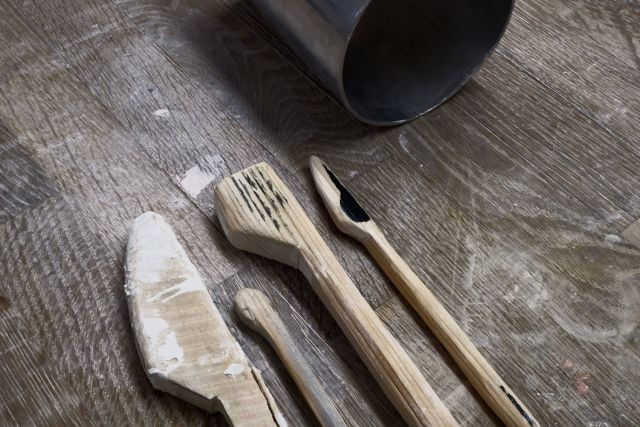
Steven Edwards
- Ceramicist
- Surbiton, United Kingdom
- Master Artisan
By appointment only
+44 (0)7725020580
Manipulating the clay
- • Steven's skills were perfected with master ceramicists Jack Doherty and Nicholas Lee
- • He throws closed airtight form using Parian porcelain clay
- • His work has been exhibited at many shows including the British Ceramic Biennial 2019
Intrigued by art from an early age, Steven Edwards discovered ceramics at school when he was asked to 3D sketch a life model with clay and enjoyed the spontaneity of the process. “Experiencing a new material to express my ideas was fascinating” he remembers, and to explore clay further he decided to do the designer/maker course at college. In 2018, he achieved an MA in Ceramics at Farnham University for the Creative Arts. Interested in process-led making, the artist uses simple tools and traditional techniques to explore unanticipated outcomes, in particular revealing properties when clay is placed under tension. By constantly manipulating the clay’s limits, he attempts to create objects that reference a balance between technical handmade forms and mechanised mark making.
Read the full interviewWorks
Photo: ©All rights reserved

Photo: ©All rights reserved
This sculpture is created by following a specific making process of repetition, compression and cut. Each layer is formed from thrown spheres of Parian porcelain that are compressed and sliced to record tension and movement. The final form is the result of combining the compressed elements to create a flowing figurative sculpture that explores the duality of distortion and precision.
Length 33 cm
Width 32 cm
Height 35 cm

Photo: ©All rights reserved
Separate elements are combined to create this sculpture. The folded layer ring that wraps around the vessels is assembled from stacked Parian porcelain spheres that are thrown, compressed, stacked and cut. The gradation of colour is added using body stain before throwing. The extracted core from the cut stack is reused to create the precise nesting of vessels within the interior space. These combined elements of the sculpture alludes to the theme of duality – the contrast of visual distortion and precision, the stillness and movement in form and the surface deception between synthetic and natural.
Length 25 cm
Width 18 cm
Height 18 cm

Photo: ©All rights reserved
Layers of thrown, incised, compressed and stacked Parian porcelain spheres shape this vessel sculpture. Part of an ongoing series of work that explores applying fixed processes to making, this piece incorporates the gradation of colour and bulging burst white spheres throughout the stacked assembly of the form. The precise cylindrical interior includes a separate vessel insert that lifts the stack from the base.
Height 32 cm
Diameter 17 cm

Photo: ©All rights reserved
This vessel sculpture is part of an ongoing series of work that explores applying fixed processes to making. It is created from layers of thrown air tight Parian porcelain spheres that are compressed and stacked one on top of the other to reveal surface tension. Colour lines are added to the surface using brushed on colour slip before the compression. The stack is then cut through using a cylinder cutting tool. The cut forces further distortion to the stacked form and creates an opposing precise interior surface in reference to a vessel.
Height 23.5 cm
Diameter 17 cm






